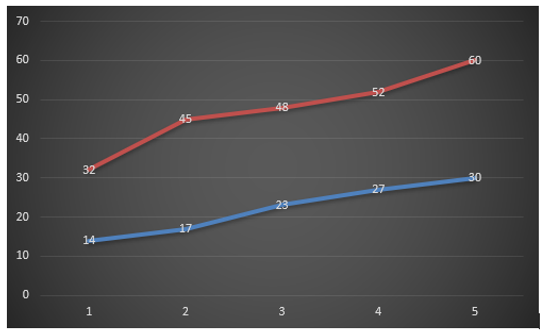Case Study - Steve
Subject description - Male mid 50’s, seeking general benefits.
Author and instructor – Glenn Weinert
Synopsis/Executive Summary
-
The purpose of ongoing case studies is to evaluate the effectiveness of the BREATHE Method for improving breathing effectiveness, and to continually refine based on data.
-
Functional Breathing® and the BREATHE Method was developed by Glenn Weinert. Glenn has been trained and certified in a range of breathing modalities and is also a certified free-diver, NLP Master Practitioner, and is a lifelong learner of wellness and high-performance modalities.
-
Whilst some of the core concepts of the BREATHE Method appears to be rooted in the Buteyko Method, the tools and techniques vary significantly from the Buteyko Method. This is most evident with the use of techniques and conditioning exercises. Based in the data of many case studies, it appears that a mixed modalities approach based on individual requirements is superior a singular technique. The BREATHE Method body of knowledge is also updated as required, in order to be current and in line with research published by reputable prominent scientific sources.
-
Improvement in CO2 tolerance and breath retention times have been shown to have positive impacts on both general health and athletic performance.
-
The theory that is used as both the foundation of this case study and the BREATHE Method is the Bohr Effect. Specifically, the impacts of breathing to the left and right shifting of the dissociation curve.
-
This study tests if the tools and techniques taught under the BREATHE Method can improve tolerance to CO2 both at rest and under load. An improvement to CO2 both at rest and under load will decrease instances of in inadvertent over breathing. Inadvertent over breathing for extended periods of time results in less-than-optimal oxygen exchange between haemoglobin and cells. There is sufficient evidence to indicate there is decrease in health and performance when a person is not breathing effectively, and improvements when efficiency is improved.
Findings
-
The table below show two of the measurement use by the BREATHE Method to measure progress beyond. The SBS or Suspended Breath Score which measures the CO2 breath reflex in a relaxed passive state and the ABS score which measures breath hold, in an active state.
-
Steve started the case study with a Suspended Breath Score of 14 and an Active Breathe Score of 32. A person within the range of these metrics is much more likely to be experiencing elevated levels of stress, anxiety, sleep issue and digestion issues. Steve reported all but digestion issues.
-
Over the course of this 5 week case study there was a 114% increase in the SBS score and 88% increase in the ABS. Steve’s metrics moved from to
-
Steve responded moderately well to the BREATHE Method.
Outcomes
Baseline Suspended Breath Score = 14
Baseline Active Breath Score = 32
Results after 5 weeks
Suspended Breath Score = 30
Active Breath Score = 60
Improvements
SBS - 114% improvement
ABS - 88% improvement
Below are the SBS (Blue) and ABS (red) results tracked over 5 weeks.
-
The exercises given each week over the 5 weeks were calibrated to Steve’s individual requirements. This calibration was done using the guidelines provided in the BREATHE Method Practitioner manual and from observing the subject face to face during consultations and trainings.
Discussion
-
Steve was seeking to improve general well-being. There was a 114% increase in his SBS and an 88% increase in his ABS. Steve reported significant improvements with sleep and noticeable reductions in stress and anxiety levels.
Conclusion
-
The improvement to Steve’s SBS and ABS for a person in their mid-50’s doing could have significant positive health impacts, if these scores are maintained or improved on. The conclusion is the BREATHE Method is appropriate and effective for a typical male in their mid-50’s.
-
Recommendations
-
It is recommended that Steve continue with the recommended exercise for a person with current metrics.
-
Steve should continue the pre-workout breathing routine prior his gym workouts, this has been shown to temporarily improves a person’s respiration ability. There are numerous increases in benefits which last from 10 minutes for several hours.
Implementation
-
To obtain optimal result a person should work with a certified Functional Breathing Instructor.
-
Alternatively. The BREATHE Method is a dynamic method and recommendations are based on individual scores. It is recommended that anyone unable to work with an instructor face to face uses the breathe tracker and follow the action plan for their individual breath metrics.



